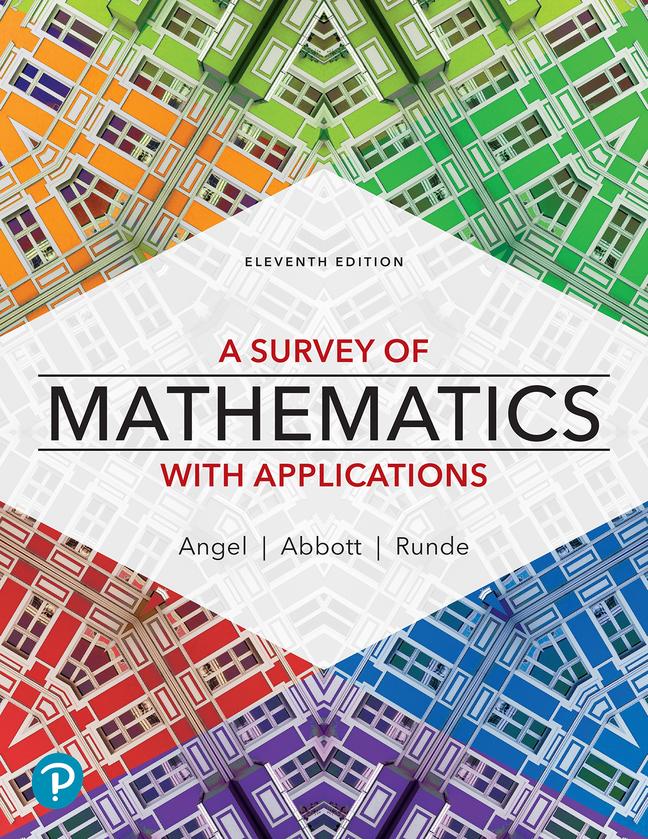Question
Can you please help me the questions part B? Exploratory Factor Analysis (Geosciences) Worksheet Name: Skye, Wafa, Giselle, Nikole Exploratory Factor Analysis Worksheet (Geosciences) Part
Can you please help me the questions part B?
Exploratory Factor Analysis (Geosciences) Worksheet
Name: Skye, Wafa, Giselle, Nikole
Exploratory Factor Analysis Worksheet (Geosciences)
Part A: Some Conceptual Questions
1. Why would you want to understand the dimensionality of a scale?
We want to understand the dimensionality of a scale so we know what we are measuring.
2. How are Principal Components Analysis and Exploratory Factor Analysis different?
What is a potential criticism of each?
PCA may overestimate, while EFA may dismiss too much. That in itself may be the potential criticism depending on how much information you need from the analysis.
3. How would you determine how many factors to extract?
You'd look at the eigenvalues, the scree plot, and the factor loadings to determine how many factors to extract.
4. Under what conditions might you choose to use an orthogonal rotation of factors in an
EFA? An oblique rotation?
You'd use orthogonal rotation of factors only if you're sure the factors are uncorrelated. Although it's better to choose an oblique rotation because it works better with correlated factors.
5. How would you determine whether items found to load on a factor form a meaningful,
interpretable sub dimension?
You'd determine if they are meaningful by reading the items on each factor and find out what they have in common.
6. What would you do if a factor in the rotated factor matrix (orthogonal rotation) or pattern
matrix (oblique rotation) were composed of items that seem to have nothing in common
from a rational or theoretical standpoint?
You'd have to over extracted the factors so you'd need to extract fewer factors
7. From start to finish, list all the decisions you have to make when conducting an EFA.
First, figure out the extraction method and rotation method, then see how many factors there are, then how many items need to be deleted, then if there are multiple dimensions, then find out their commonality to one another. Finally, find out the psychological meaning of each factor.
Part B: Practice - Use "Geoscience Attitudes" dataset
Geoscience (or earth science) is a broad field which can include the study of geology, geography,
and archaeology, as well as the study of the earth's atmosphere, hydrosphere (water bodies), and
biosphere (ecosystems). A researcher wanted to assess attitudes and interests related to the field
of geoscience. Below are the items (taken from Exercise 18.1 in your book, p. 282-284)
Item 1: I have a good understanding of how scientists do research.
Item 2: I consider myself well skilled in conducting scientific research.
Item 3: I've wanted to be a scientist for as long as I can remember.
Item 4: I have a good understanding of elementary geoscience.
Item 5: I'm uncertain about what course of study is required to become a geoscientist.
Item 6: I am considering majoring in geoscience.
Item 7: I'd enjoy a career in geoscience.
Item 8: I plan on taking math courses that would prepare me to major in science.
Item 9: I would enjoy going hiking or camping.
Item 10: I would enjoy boating.
Item 11: I'd prefer to work on a science project "in the field" than in a research laboratory.
Item 12: I enjoy reading science fiction novels.
Item 13: I enjoy reading nature and travel books and magazines.
1. Read over the items above. How many subdimensions (or factors) do you anticipate?
Which items will load on these factors? This practice is just to get you familiar with the
items and think about how they may be grouped.
2. Which extraction method do you want to use and why?
3. Do you want to rotate your factors? Why or why not? If so, what type of rotation are you
using and why?
Run your dimension reduction procedure before answering the next question! No matter
what extraction method you chose, make sure to check off the "Scree Plot" box on the extraction
method tab. Also click on the "Options" button and click "Sorted by size" for easier
interpretation.
4. What values are listed in the initial communalities? What do these mean?
5. Based on the Eigenvalues, how many factors should you extract? What is the percentage
of variance accounted for by each of these factors?
We'd extract the top 4 components. 1- 22.891%, 2- 15.27%, 3- 11.642%, 8.851%
6. Based on the Scree plot, how many factors should you extract?
7. In the unrotated matrix, does each item have a strong loading on one or both factors (if
not, indicate which items may need to be deleted)?
8. If you rotated your factors, in the rotated matrix, does each item clearly load onto one of
the factors? Do any items load onto more than one factor? Should you delete any items
based on these loadings?
9. Which items load on which factors? Try to provide a meaningful category for each
grouping.
10. If you used an oblique rotation, what is the correlation between the
Step by Step Solution
There are 3 Steps involved in it
Step: 1

Get Instant Access to Expert-Tailored Solutions
See step-by-step solutions with expert insights and AI powered tools for academic success
Step: 2

Step: 3

Ace Your Homework with AI
Get the answers you need in no time with our AI-driven, step-by-step assistance
Get Started


